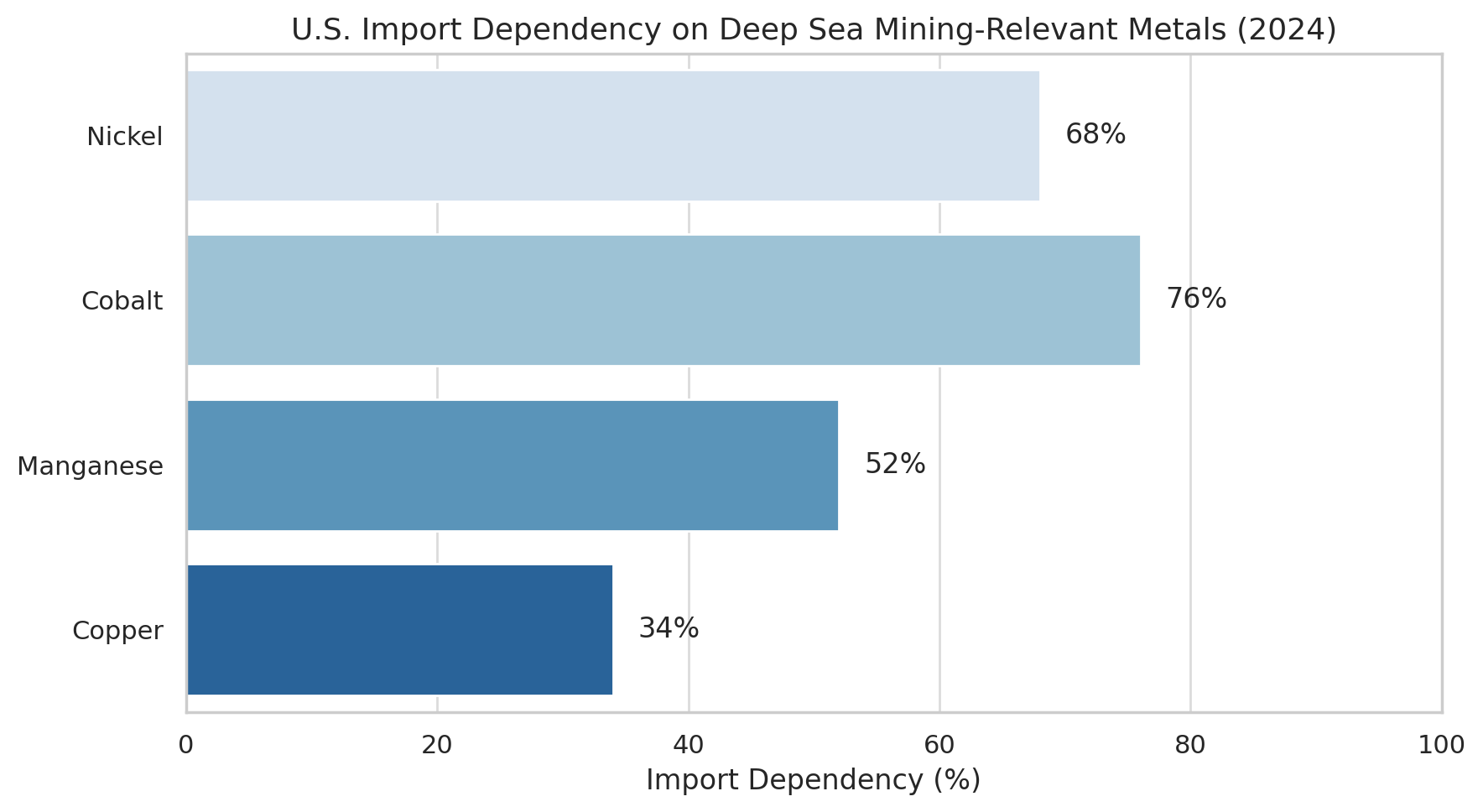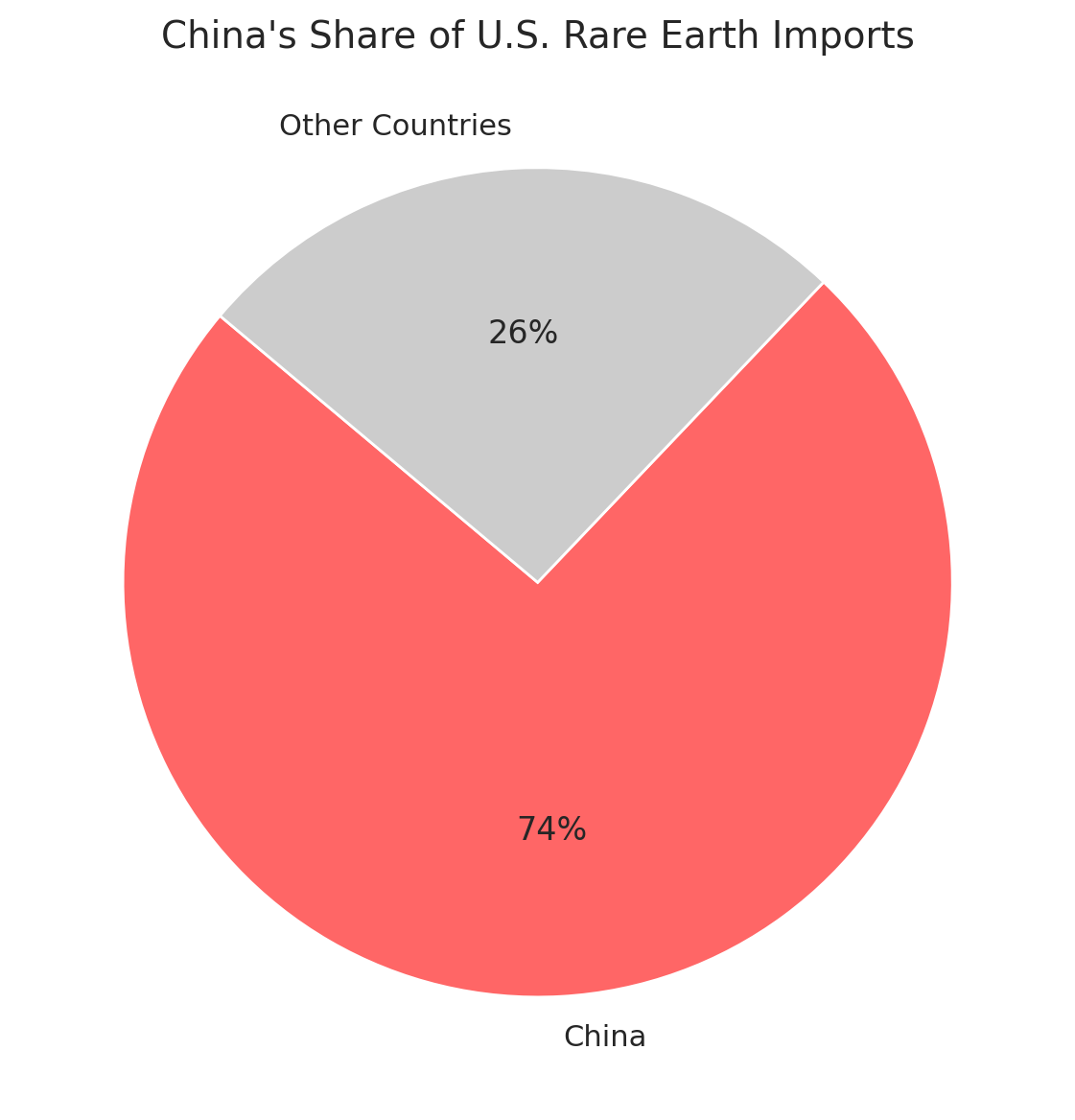
Pioneering Sustainable Deep Sea Mining in the U.S

Our Mission
Here at Noble Deep, our mission is to responsibly unlock and tap into the ocean’s minerals through cutting-edge technology while combining sustainable practices-strengthening clean energy output, economic resilience, and long-term resource independence.

Why Deep-Sea Mining?
Source: U.S. Geological Survey (USGS), 2024 Critical Minerals Report
This bar chart derived from data from the USGS illustrates the United States’ reliance on foreign imports for a multitude of critical minerals which are imperative for the development of clean energy and advanced technologies. As can be seen by the graph, the U.S is currently 76% import-reliant on cobalt, 68% on nickel, and a little over 50% reliant on manganese. All of these metals play a crucial role in electric vehicle batteries, and as stated prior, is needed for modern renewable energy systems. This heavy reliance on imports demonstrates the urgent need to develop secure and sustainable domestic sources-such as those found in polymetallic nodules on the ocean floor.
The pie chart that can be seen highlights the overwhelming amount of control that China posses over the rare earth supply chain, as the country accounts for 74% of all U.S rare earth imports. These numbers skyrocket when taking into account that China controls nearly 90% of all rare earth processing and refining capacity globally (International Energy Agency). They also control a large portion in the market for the critical metals discussed prior. And due to the necessity of these metals for modern technologies, having such a heavy reliance on one single nation creates a bottleneck in the global supply chain and it limits the flexibility needed to meet the current rapid growing demand.
Solving this problem with a more balanced and diversified approach-through applications such as domestic innovation, allied sourcing, and the development of mining for untapped resources like seabed minerals-can help to alleviate this issue. Completing such a goal can help create a more stable and accessible flow of these minerals. And while critical metals are the primary aim for seabed mining, polymetallic nodules are still enriched in heavy rare earth elements, showing the double importance for accessing these nodules. With this, the broader lesson is clear: monopolies over essential resources slow down progress. Noble Deep aims to be part of a more open, sustainable, and resilient mineral supply system.
Source: RAND Corporation; U.S. Department of Energy (DOE), 2023

